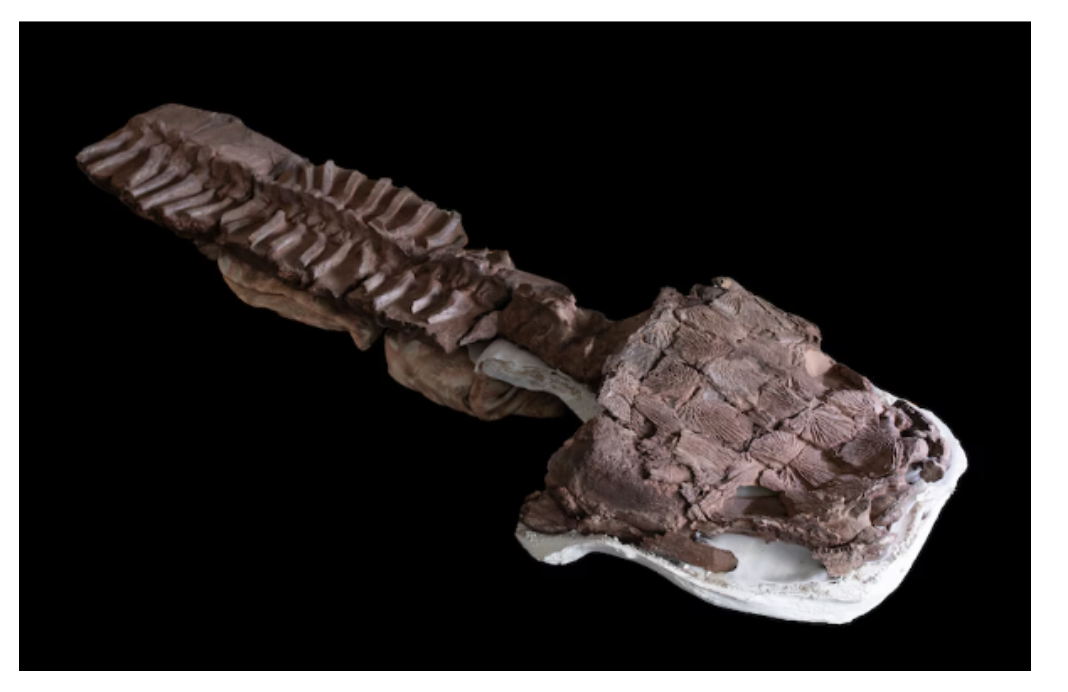News Excerpt:
Scientists have discovered an apex predator with a two-foot skull dominated by enormous fangs that lived in freshwater environments before the age of dinosaurs.
- Named Gaiasia jennyae, this salamander-like tetrapod (four-legged vertebrate) inhabited what is now Namibia.

About Gaiasia Jennyae
- According to a study published in Nature, this eight-foot-long creature is the largest tetrapod yet found with digits.
- It had a broad, flat, diamond-shaped head and large interlocking fangs, indicating it was a suction feeder with a powerful bite capable of capturing larger prey.
- Gaiasia lived much further south than its close relatives in present-day North America and Europe.
- This suggests that early tetrapods were more widespread and adaptable to different climates than previously thought.
- The creature lived about 280 million years ago during the early Permian period, approximately 40 million years before the first dinosaurs.
- This era featured other predators such as Dimetrodon, a carnivore with a sail on its back, and Helicoprion, a shark-like fish with spiral-arranged teeth.
- Gaiasia jennyae was considered an "archaic" species even in its time, surviving about 40 million years after most of its relatives had died out at the end of an ice age, during a period when new animal lineages were emerging.
- It was named after the Gai-As Formation in Namibia, where the fossils were found, and in honor of paleontologist Jenny Clack, who passed away in 2020. The scientists reconstructed the creature from four specimens.


